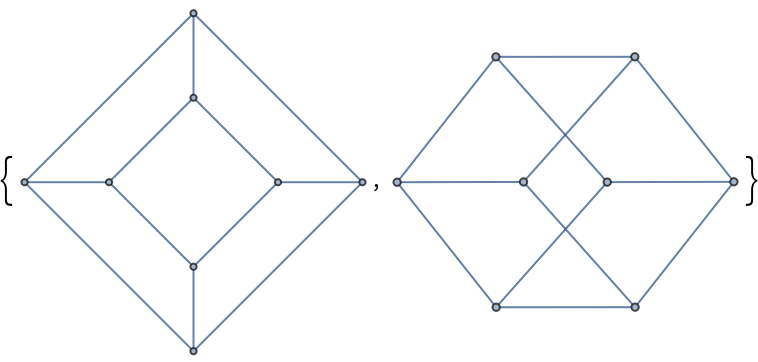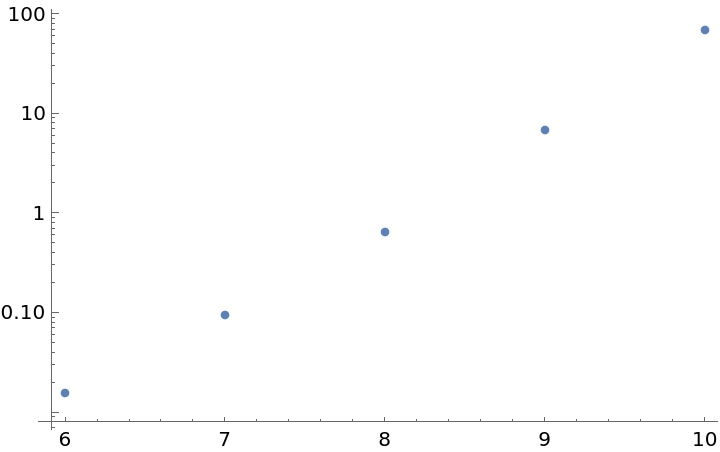Wolfram Function Repository
Instant-use add-on functions for the Wolfram Language
Function Repository Resource:
Compute the immanant of a square matrix associated with an integer partition
ResourceFunction["Immanant"][p,m] gives the immanant of the square matrix m associated with the integer partition p. |
Immanants of a 2×2 symbolic matrix:
| In[1]:= |
| Out[1]= |
| In[2]:= |
| Out[2]= |
All immanants of a 3×3 symbolic matrix:
| In[3]:= | ![ResourceFunction["Immanant"][#, \!\(\*
TagBox[
RowBox[{"(", "", GridBox[{
{
SubscriptBox["a",
RowBox[{"1", ",", "1"}]],
SubscriptBox["a",
RowBox[{"1", ",", "2"}]],
SubscriptBox["a",
RowBox[{"1", ",", "3"}]]},
{
SubscriptBox["a",
RowBox[{"2", ",", "1"}]],
SubscriptBox["a",
RowBox[{"2", ",", "2"}]],
SubscriptBox["a",
RowBox[{"2", ",", "3"}]]},
{
SubscriptBox["a",
RowBox[{"3", ",", "1"}]],
SubscriptBox["a",
RowBox[{"3", ",", "2"}]],
SubscriptBox["a",
RowBox[{"3", ",", "3"}]]}
},
GridBoxAlignment->{"Columns" -> {{Left}}, "ColumnsIndexed" -> {}, "Rows" -> {{Baseline}}, "RowsIndexed" -> {}},
GridBoxSpacings->{"Columns" -> {
Offset[
0.27999999999999997`], {
Offset[0.7]},
Offset[0.27999999999999997`]}, "ColumnsIndexed" -> {}, "Rows" -> {
Offset[0.2], {
Offset[0.4]},
Offset[0.2]}, "RowsIndexed" -> {}}], "", ")"}],
Function[BoxForm`e$,
MatrixForm[BoxForm`e$]]]\)] & /@ IntegerPartitions[3]](https://www.wolframcloud.com/obj/resourcesystem/images/e23/e239aa0c-8022-4c82-983c-c7c0990f27a0/5cd0113153973c77.png) |
| Out[3]= |  |
Use exact arithmetic to compute the immanant:
| In[4]:= |
| In[5]:= |
| Out[5]= |
Use machine arithmetic:
| In[6]:= |
| Out[6]= |
Use 24-digit precision arithmetic:
| In[7]:= |
| Out[7]= |
Two graphs:
| In[8]:= |
| Out[8]= |  |
The immanantal polynomial of a graph is the immanant of id x-m, where m is the corresponding adjacency matrix and id is the identity matrix of appropriate size.
Prove that two graphs are isomorphic by showing that all their corresponding immanantal polynomials are identical:
| In[9]:= | ![n = VertexCount[g];
mg = AdjacencyMatrix[g];
mh = AdjacencyMatrix[h];](https://www.wolframcloud.com/obj/resourcesystem/images/e23/e239aa0c-8022-4c82-983c-c7c0990f27a0/350c32ea3ca228ff.png) |
| In[10]:= | ![Expand[ResourceFunction["Immanant"][#, x IdentityMatrix[n] - mg] == ResourceFunction["Immanant"][#, x IdentityMatrix[n] - mh]] & /@ IntegerPartitions[n]](https://www.wolframcloud.com/obj/resourcesystem/images/e23/e239aa0c-8022-4c82-983c-c7c0990f27a0/758a3552526ac13a.png) |
| Out[10]= |
This is consistent with the result of IsomorphicGraphQ:
| In[11]:= |
| Out[11]= |
The determinant is the immanant corresponding to the integer partition (1,1,…):
| In[12]:= |
| Out[13]= |
The permanent is the immanant corresponding to the integer partition (n):
| In[14]:= |
| Out[15]= |
Immanants are invariant under a symmetric permutation of rows and columns:
| In[16]:= | ![n = 5;
m = Array[C, {n, n}];
{partition, permutation} = {RandomChoice[IntegerPartitions[n]], RandomSample[Range[n]]}](https://www.wolframcloud.com/obj/resourcesystem/images/e23/e239aa0c-8022-4c82-983c-c7c0990f27a0/61e65bce8b0ae36d.png) |
| Out[18]= |
| In[19]:= |
| Out[19]= |
Immanant evaluates only if the integer partition p is a weakly decreasing list of positive integers:
| In[20]:= |
| In[21]:= |
| Out[21]= |
| In[22]:= |
| Out[22]= |
In general, computing the immanant becomes slow even at modest dimension:
| In[23]:= |
| Out[23]= |
| In[24]:= |
| Out[24]= |  |
Verify an identity for the immanant corresponding to the partition (3, 1, 1, …) according to Merris and Watkins (see citation in Source Metadata below):
| In[25]:= |
| Out[26]= |  |
| In[27]:= | ![ResourceFunction["Immanant"][part, mat] == \!\(
\*UnderoverscriptBox[\(\[Sum]\), \(i = 1\), \(n\)]\(
\*UnderoverscriptBox[\(\[Sum]\), \(j = 1\), \(n\)]Boole[
1 <= i < j <= n] Permanent[
mat[\([\)\({i, j}, {i, j}\)\(]\)]] Det[
Map[Delete[#, {{i}, {j}}] &, mat, {0, 1}]]\)\) - \!\(
\*UnderoverscriptBox[\(\[Sum]\), \(i = 1\), \(n\)]\(mat[\([\)\(i, i\)\(]\)] Det[Drop[mat, {i}, {i}]]\)\) + Det[mat] // Expand](https://www.wolframcloud.com/obj/resourcesystem/images/e23/e239aa0c-8022-4c82-983c-c7c0990f27a0/60bc29646ac1de47.png) |
| Out[27]= |
This work is licensed under a Creative Commons Attribution 4.0 International License